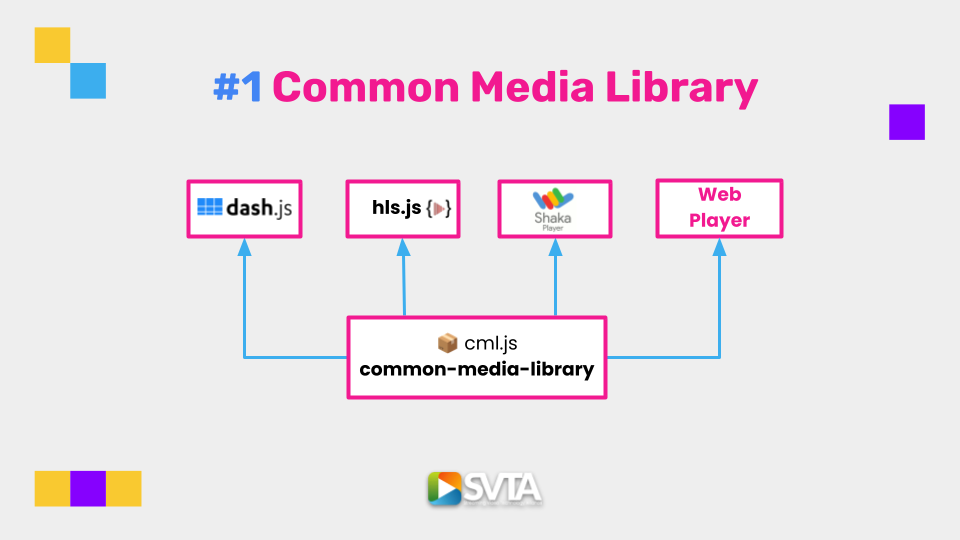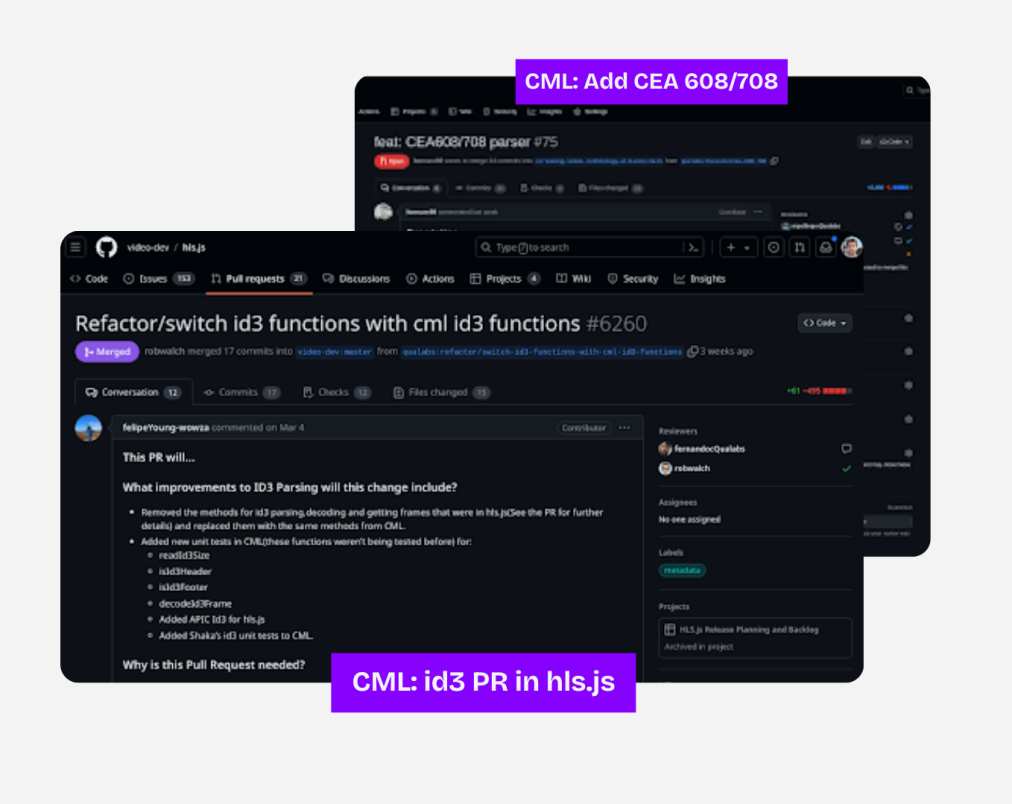Challenge
Before CML, developers working on various video players often ended up duplicating a lot of code. This led to inconsistencies, ongoing maintenance headaches, and general inefficiencies. The industry needed a single, unified solution to standardize metadata handling. Achieving interoperability and embracing common standards was crucial for allowing different players and platforms to seamlessly interact with each other.
Process
The idea for the Common Media Library was first shared by Casey Occhialini, Principal Software Engineer at Paramount, during the project call held as part of Summer Camp 2024. Presented to the video tech community, the concept resonated strongly and, following a community voting process, was selected as one of the initiatives for the Summer Projects 2024.

With the support of developers at Qualabs, the team embarked on consolidating scattered pieces of code into a single, well-structured library using TypeScript. The process involved careful analysis, code extraction, and refinement to ensure that the CML would meet the community's needs, offering a reliable and intuitive tool for developers.
Slack and GitHub Projects played a key role in fostering seamless collaboration, keeping everyone aligned, and ensuring that the project progressed efficiently with a transparent workflow. This collaborative approach highlighted the power of open-source innovation within the Summer Camp framework.
Solution
The Common Media Library established itself as a unified codebase providing standardized implementations for ID3, CEA608/708, and Content Steering. By centralizing these features, CML has made it easier to develop, maintain, and enhance video players. Its simplified approach reduces the complexity of adding new functionality, ensures that all players receive improvements simultaneously, and speeds up the overall software development cycle.

Results
CML’s adoption by prominent open-source video players like hls.js and dash.js is a testament to its effectiveness and practicality. Learn more about its public repository. This success story has led to greater industry standardization, cutting down repetitive coding tasks and ensuring a consistent, high-quality viewer experience across different platforms.
With CML at the core, developers can now quickly roll out updates, introduce new features, and ensure that every advancement in technology is shared fairly among all adopters. By solving common challenges and placing essential components under one roof, CML drastically reduces development time and resource usage. The result? A more seamless, accessible, and future-ready environment for everyone involved in creating and watching video content.
The Common Media Library marks a significant step toward a more integrated, efficient video industry. It proves that open collaboration and community-driven innovation can truly elevate how we develop and consume video content around the world.
As part of Summer Camp 2024, a hybrid demo showcased the results of this project, highlighting its practical applications and impact on video technology. Watch the demo here.

